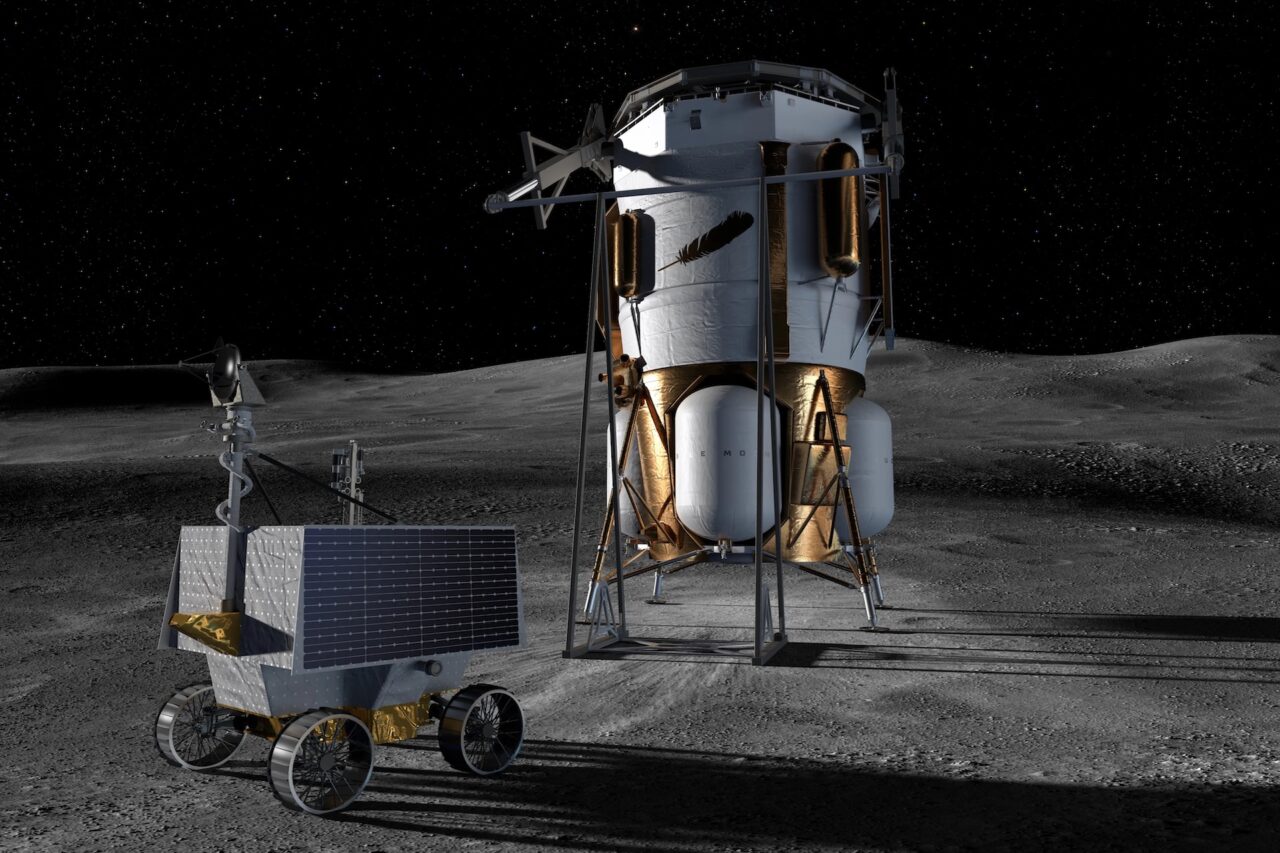NASA is reassessing its options for the lunar lander designated for the Artemis 3 mission due to significant delays with SpaceX‘s Starship Human Landing System (HLS). With the goal of ensuring a timely return to the Moon, NASA is considering Blue Origin as a potential alternative. Recent developments indicate that Blue Origin may be positioned to deliver its lunar lander sooner than expected.
On a panel at the American Astronautical Society’s 2025 von Braun Space Exploration Symposium, Jacqueline Cortese, Blue Origin’s Senior Director of Civil Space, highlighted the company’s progress on its lunar landers, the Blue Moon Mark 1 (MK1) and Mark 2 (MK2). Cortese announced that the MK1 could potentially launch a demonstration mission before the end of this year. Designed to transport up to 3 tons of cargo to the lunar surface, the MK1 serves as a precursor to the MK2 crew lander, which could replace SpaceX’s Starship for the Artemis 3 mission if it is ready first.
Cortese stated, “Especially with MK1 and some of our preceding work we’re doing, we have what we think are some good ideas about maybe a more incremental approach that could be taken advantage of for an acceleration-type scenario,” as reported by SpaceflightNow.
SpaceX Delays Open Door for Blue Origin
In 2021, SpaceX secured a $2.9 billion contract with NASA to provide the initial crewed lunar lander for the Artemis program. The Starship HLS is expected to deliver Artemis 3 astronauts to the Moon around mid-2027. However, following a rocky start to Starship’s 2025 launch schedule, numerous unmet technical milestones have raised concerns that it could be delayed by years. Experts have pointed out that Starship, being the largest and most complex launch vehicle ever constructed, faces significant logistical challenges for lunar landings, including the need for an elevator to transport astronauts to the Moon’s surface.
Amid these delays, acting NASA Administrator Sean Duffy announced a potential reopening of the Artemis 3 contract to other spaceflight companies, including Blue Origin. Duffy emphasized, “I’m going to let other space companies compete with SpaceX, like Blue Origin, and again, whatever one can get us there first, to the Moon, we’re going to take,” as noted in a CNBC interview.
Path Forward for Blue Origin
The Blue Moon landers present a simpler alternative compared to Starship HLS. They are based on a proven design and are smaller, featuring a lower center of gravity for easier landings. Blue Origin is assembling its landers with a robust team of engineers from organizations including Lockheed Martin, Boeing, Draper, Astrobotic, and Honeybee Robotics.
NASA has already contracted Blue Origin to develop the MK2 for the Artemis 5 mission set for several years in the future. Nonetheless, the company is also working on plans to expedite the MK2’s development for Artemis 3. During the recent symposium, Cortese reported that the MK1 lander is currently undergoing final assembly at a dedicated production facility in Port Canaveral, Florida. After assembly, it will be transported to NASA’s Johnson Space Center in Houston for extensive tests designed to simulate the conditions of space, including vacuum and extreme temperature fluctuations.
Blue Origin’s inaugural MK1 demonstration mission, termed “Pathfinder,” aims to land at the Moon’s south pole. This mission will not only test critical systems but also carry two NASA payloads: SCALPSS (Stereo Cameras for Lunar-Plume Surface Studies) and LRA (Laser Retroreflective Array). Cortese indicated that this test flight “would launch in the next couple of weeks,” although she did not provide a specific timeline.
If Blue Origin achieves its launch before 2026, it could significantly accelerate the MK2’s development, as both landers share much of the same hardware. Nevertheless, Blue Origin faces substantial challenges ahead, including the demonstration of a propellant transfer system, validation of the spacecraft’s life-support capabilities, and obtaining crew certification. Even if selected for Artemis 3, integrating this alternative landing system into the existing mission architecture may pose unexpected difficulties.
As the situation develops, the pressure remains on SpaceX to deliver a viable human landing system by mid-2027. Whether Blue Origin’s advancements will motivate SpaceX to expedite its efforts remains to be seen.
